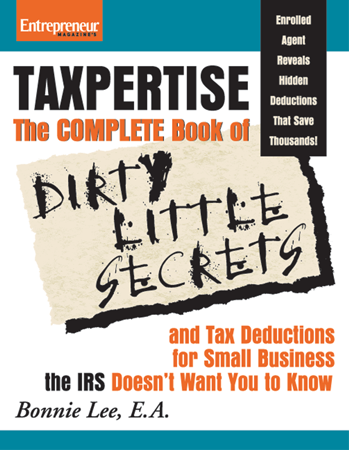If you are self-employed, you likely use your personal car or truck for business as well as pleasure. If so, the business portion of your vehicle expense is deductible.
If you work for The Man and use your vehicle on the job and are not reimbursed for your mileage, you have a write off as well.
Did you know that you can write off mileage every time you run to the pharmacy to pick up a prescription or visit your eye doctor or embark other trip for medical purposes? And if you do volunteer work for a qualified nonprofit, your unreimbursed volunteer mileage may be deductible.
It gets better. If you work two jobs and drive between job #1 and job #2 (without going home first), you can deduct those miles. I have a client who saves about a grand a year in taxes because he writes off the mileage between his two jobs.
You’re thinking, “Yeah! This is great!” Sure, it’s great, but it’s not necessarily easy. Naturally, there are rules to follow, forms to complete, data to track. In fact, the IRS regulations state that you should basically attach a clipboard to your steering wheel and keep a mileage log. You need to track every deductible mile you drive. You must report the exact number of total miles you drive every year breaking out commuting mileage, which, by the way is not deductible, personal miles driven, and business miles; like you’re really going to jump on that one. Even if you make it a New Year’s resolution, it’s hard work to keep a complete and accurate mileage log.
I’ve been representing taxpayers in audits for more than 20 years and here’s the deal when it comes to that mileage log: The auditor asks for it and I say “Come on, you know nobody, absolutely nobody, keeps one.” (Well I did have a client once who kept one but was he ever audited? No!) So the auditor will argue for a bit saying he can disallow the deduction because no contemporaneous records were kept. I carry on about how it’s unreasonable to expect folks to really do this, and finally the auditor consents to a reconstruction.
So if you have an appointment book (always retain your appointment books in your tax file) you can go through it and using Mapquest if necessary, compile the numbers the IRS is looking for.
You should keep some basic records that are easy to manage:
- On January 1 log in your beginning mileage from your odometer into your appointment book. If you use a PDA, record the mileage on a sheet of paper and place it in your current year tax file.
- Put a note on your December 31 calendar to list your ending odometer reading.
- Note: If you’re going through an audit and don’t have odometer readings, look for repair receipts near the beginning and end of the year. The odometer reading will be listed there and it’s possible to extrapolate the numbers.
- By subtracting your beginning from your ending odometer reading you will have your total mileage figure for the year. The IRS asks for this number on your tax return.
- Mark as many business destinations as you can throughout the year in your appointment book. At year end do a rough calculation to determine what your deductible business usage is.
- If your business usage is greater than 50% you may qualify to deduct that percentage of your total actual expenses including: gas and oil, tires, repairs, maintenance (car washes, etc.), insurance, loan interest, vehicle registration, and depreciation. Or you may elect to take the standard mileage rate times the total business miles driven. Your tax pro can help you decide which method is best for your particular situation. If you use your vehicle less than 50% for business, you can only take the standard mileage rate.
Due to the advent of PDAs, appointment books are becoming obsolete. If you use an electronic calendar and printout capability is not available, than you will want to log reminders to mark the odometer readings and store that information in your tax files. Quarterly, you should manually track business versus personal usage to establish and substantiate your percent of business usage.
It’s unfortunate that we have to spend so much time keeping these sorts of records, but you will be happy you did if the IRS knocks at your door.


